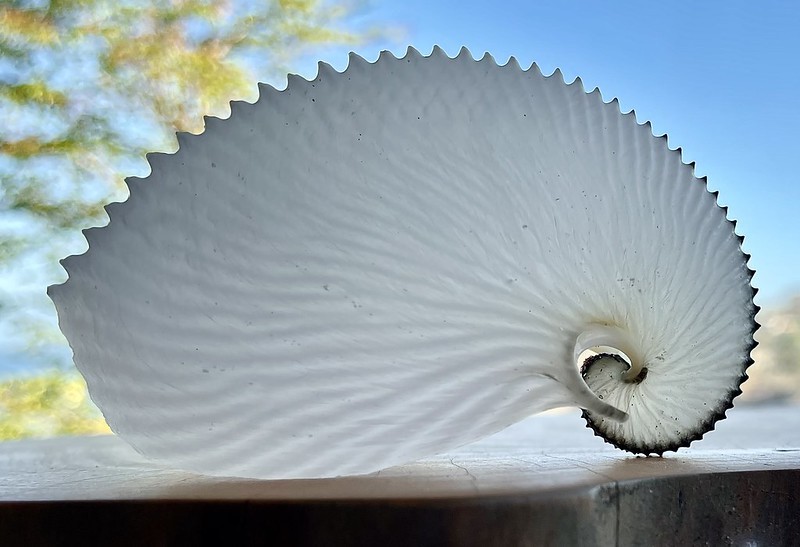Argonauta Argo is an octopus but not quite the typical one. Even the sound of its name suggests that it is more intriguing than you would expect. The female species can create a protective shell for herself and her eggs.

Shell-like Egg Case
After mating, the female will initially keep the sperm-filled limb of her male partner. After that, she gets to work on what seems like a handbag.
She emits a mineral compound via the tips of her two blue-sheened arms and weaves it into a delicate basket in the shape of a shell. More than 40,000 embryos may be housed until it reaches its full length of about a foot. The argonaut octopus utilizes the trapped air to float just below the surface of the water in warm environments all around the globe.
The New York Times reported that due to the striking similarities between its egg bearer and the tough shells of the Nautiloids, the octopus's distant relatives, the argonaut has been dubbed the "Paper Nautilus" by scientists. In contrast to what was previously believed, genomic sequencing data shows that the octopus independently developed the genes to construct its elaborate embryo armor.
See Also: Scientists Find 'World's Largest Seagrass Forest' With the Help of Cameras Attached to Sharks
A Recent Study
Davin Setiamarga, a researcher at the National Institute of Technology, Wakayama College in Japan, published the new evidence with colleagues in the journal Genome Biology and Evolution last month. He claimed the results might fundamentally alter several misunderstandings among scientists about how cephalopods originated.
The last common ancestor of most cephalopods presumably possessed a chambered, pearly shell like the nautilus's, which exists today.
As a result of millions of years of evolution, however, cephalopods with soft bodies - such as octopuses, squids, and cuttlefish - have learned to internalize that outer shell and reduce it while adapting to their unique environments. That's why most people associate softness with octopuses (the ram's horn squid being an exception).
The argonaut's nautilus-like shell has sparked scientific debate about whether an animal can lose and regain such a characteristic throughout evolution.
At first, some experts thought that the argonauts' egg case was formed by reactivating archaic genes from the age of mollusks. But when the genome of Argonauta argo was sequenced from samples taken from the Sea of Japan, the data showed this was not the case.
Argonauts have been shown to possess protein-coding genes necessary for developing "true shells," like those that encase oysters. However, they use a different set of genes than the nautilus does to create these structures. This suggests that the shell-resembling egg case did not develop from a primitive shell form.
Should We Call it a Shell?
Dr. Setiamarga feels confident to call it a shell, but not Michael Vecchione, a zoologist at the Smithsonian National Museum of Natural History.
The zoologist said that whereas most mollusks use mantle tissue produced by a gland to create their shells, the argonaut's shell material is secreted from the arms.
Also Read: Researchers are 3D-Printing Concrete 'Innoreefs' to Help Save Natural Coral Reefs
This article is owned by Tech Times
Written by Trisha Kae Andrada
ⓒ 2025 TECHTIMES.com All rights reserved. Do not reproduce without permission.




